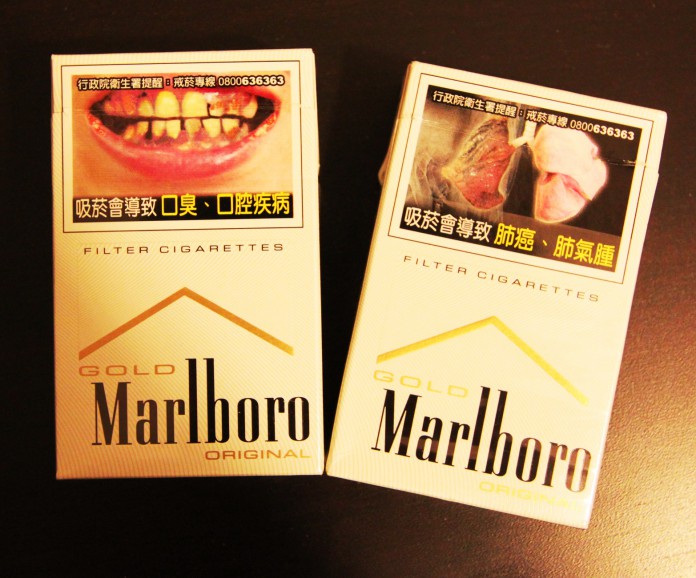Writer
Photo by Eugene Ho
This month, District Judge Richard Leon halted efforts by the United States Food and Drug Administration to place graphic images of the consequences of smoking on cigarette packages, as a result of the allegations that these images would be unconstitutional.
Five of the largest companies in the tobacco industry sued the FDA on the grounds that these pictures, which depict the horrors of tobacco, were against their free speech rights granted by the first amendment. However, this seems more like an effort to save an industry that is willingly harming millions. Judge Richard Leon suggested that these pictures appealed to the consumer’s emotions rather than presenting facts. While it is true that these gruesome photographs appeal to our emotions, you cannot ignore the reality of them.
These images do present the facts, although those facts may be difficult to deal with. The truth is, if smokers, or potential smokers, pick up a pack of cigarettes and reality is slapping them in the face, they will be even less likely to buy them. As a result, the industry’s profits will decrease, which is where their real priorities lie. Their motives have been consistent in their concern for profits, all the way back to their advertising that glamorized it. Advertising still made up for $12 billion of their expenses in 2006. This industry promotes a product that they know is inherently harmful–and they still continue to protect it.
Additionally, these images will make stubborn smokers face their reality. Many of them are aware of the ramifications, but it is easy to avoid the grim reality. By being faced with these images, it forces them into an uncomfortable position that they can normally hide behind–one that will hopefully lead them to kicking their nasty habit. In addition, teenagers make up a portion of the smoking population as well. Nineteen percent of teenagers have said they smoked in the last month. This may not seem like a significant portion; however, according to the National Center for Health Statistics, the previous decline of teenage smokers is slowing down. Perhaps if shown the effects of their actions on the box, and not just the somewhat sugarcoated images they view in their health class, it will speed up the decline of smokers in this age group.
It is easy to take the stance that the government has no right to regulate people’s health decisions and that the majority of people know what tobacco use does to you. However, this is simply not the case. Class and education play a great part in tobacco usage. Although smoking used to be popular among the upper class it is now an activity amongst the lowest classes. According to the National Center for Health Statistics, in addition to socioeconomic issues, smoking is more prevalent among those that are uneducated. Twenty-nine percent of adult smokers only have a high school education, while nine percent of those have a bachelor’s degree. Without the proper education, why should we just assume they have a grasp on the true consequences of their actions? It is easy to argue the issue of free will here, when one has had the privilege of being well-educated on the matter; thus, allowing them to have the resources to make a healthy choice. This is not the case for everyone. Without a good education, it is not as easy to make well-informed choices; therefore, the government should be responsible for informing all citizens of the truth about what they are consuming. Graphic images on a product as serious and detrimental to our well-being, such as cigarettes, provide a way of reaching out to those in poverty-stricken areas where education level is low.
How can an industry, or those in our government, make choices that clearly impact their consumers and citizens in negative ways? Besides the obvious economic cost-benefit analysis, the answer likely lies in the fact that the tobacco industry donates a significant portion to many campaigns. According to the Tobacco for Tobacco-Free Kids, over $1.5 million was donated during the 2009-2010 elections by tobacco industry political action committees. This issue is complicated only because of multinational corporations and the political arena’s ability to be persuaded with money. Rather than question of this violation of the first amendment, the problem truly lies in the issue of greed and our country being handed over to these industries and multinational corporations. The negligence of the government and industry cannot be truly tackled until the political system is challenged.














